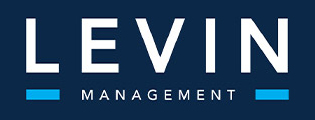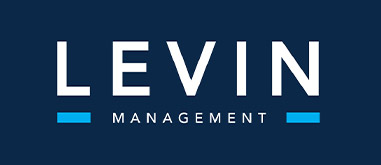Social Media, Population Diversity and Movements Like Body Positive Are Driving Changes in Women’s Wear
From the catwalk to the pages of glossy magazines to malls across America, inclusive fashion is making a statement. The 2004 Dove Campaign for Real Beauty, celebrating women of all looks and sizes, launched a trend that now includes not just fashions for the plus-size market but also chic designs that accommodate the dress codes of Muslim and Orthodox Jewish women, and fit the needs of those with physical limitations. Retail trend watchers say demographic diversity and the open attitudes of the Millennials are fueling the changes, along with social campaigns from Body Positive and the Modesty Movement. Fashion bloggers and online communities have also given a collective voice to groups once overlooked by designers and retailers.
At the Forefront of Inclusive Fashion: The Plus-Size Shopper
Clothing for style-conscious, plus-size women broke the exclusive nature of the fashion industry. Though Lane Bryant launched the concept of plus-sizes early in the last century, the choices were dowdy and designed to conceal rather than glamorize.
Setting a New Standard for Fashion and Beauty
“Role models, not runway models,” is a slogan now heeded across the fashion industry as role models hit the runway. The movement began over a decade ago and reached some major moments with Eden Miller’s plus-size show at New York’s 2015 Fashion Week and Lane Bryant’s #PlusIsEqual ad in the centerfold of Vogue’s September 2015 issue, and Nike’s #BetterForIt campaign. Add to those, the appearance of plus-size model Ashley Graham on the cover of Sports Illustrated 2016 swimsuit issue and it seems that fashion and pop culture are re-defining the standard of beauty.
No Longer a Retail Trend, but a $17-Billion Dollar Market
Designers and retailers alike have embraced the $17-billion plus-size market. Sixty-seven percent of U.S. women, in fact, are in the 14 to 34 size range and they are demanding chic contemporary looks that celebrate, not just accommodate, their body type. And everywhere from discounters to high-end boutiques, plus-sizes have taken a prominent place in the inventory.
Religion and Personal Preference Drive a New Retail Trend: Modesty in Fashion
Despite the hyper-sexy looks of contemporary fashion, there is a significant demand for conservative clothing. Driven by the dress codes of faith groups, the push for conservative fashion is also promoted by the Modesty Movement, which urges women to reject the role of sex object. Whatever their motive in covering up, women still look for fashionable and cutting-edge clothes that honor their beliefs and reflect their personal style. (Read more: http://www.today.com/style/why-covering-cool-inside-fashions-modesty-movement-mormon-style-bloggers-t12216)
Major Designers are Eyeing the Muslim Market
High-fashion hijabs and other clothing and accessories for Muslim women have long been popular throughout the Middle East and are readily available online. Now they’ve arrived in bricks-and-mortar stores like Uniqlo and H&M. One retailer, the Verona Collection, recently opened a store in Orlando Fashion Square, devoted to Muslim styles. The chic, layered looks are also attracting non-Muslim shoppers. (Read more: http://www.huffingtonpost.com/entry/modest-muslim-clothing-store-hopes-to-cater-to-people-of-all-faiths_us_573a1345e4b060aa781ae2e2) With Muslims worldwide expected to spend $327-billion on fashion and footwear by 2019, it’s no surprise that Zara, DKNY, Oscar de la Renta, Tommy Hilfiger and others are designing for this market.
Hasidic Sisters Launch a Fashion Line with Appeal Beyond the Orthodox
Brooklyn, the epicenter of hipness, is becoming the source of trendy styles that satisfy both the Orthodox Jewish dress code and the desire to look contemporary. Sisters Mimi Hecht and Mushky Notik, founders of MiMu Maxi, produce a line of billowy dresses, skirts, wraps and leggings that reflect a “worldly sensibility” that has earned them 18,000 Instagram followers. Their designs draw shoppers beyond their Orthodox community, with 50 percent of their buyers Christians. A quarter of their customers, they say, are non-religious women, seeking a conservative, but fashion-forward look. (Read more: http://nytlive.nytimes.com/womenintheworld/2015/10/27/modesty-moves-into-the-mainstream/)
A Retail Trend on the Horizon: Adaptive Fashion
Stylish clothing that accommodates a variety of physical challenges is perhaps the newest aspect of inclusive fashion. But with 60 million people in the U.S. living with a permanent disability, there’s a need waiting to be filled. For the past two NY Fashion Weeks, the runways have been graced by models with a variety of physical and cognitive challenges, who’ve won standing ovations. (Read more: http://www.huffingtonpost.com/entry/new-york-fashion-week-models-disabilities_n_6737498)
Now, designers are stepping up with fashions that fit the unique needs of this demographic. Tommy Hilfiger, who has launched a children’s line, is among the first big names. In addition to clothing, the company offers sensitivity training for sales associates who will be working with children and their parents. Young designer Lucy Jones, who made Forbes “30 Under 30” list is designing practical fashions for the wheelchair bound. And top schools like Parsons and FIT now offer classes in inclusive design.

